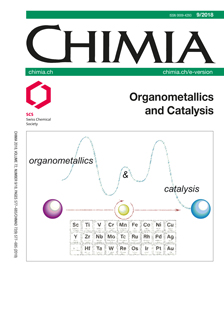Bioinspired Catalytic Generation of Main-group Electrophiles by Cooperative Bond Activation
DOI:
https://doi.org/10.2533/chimia.2018.584Keywords:
C–h functionalization, Cooperative catalysis, Dehydrogenative couplings, Main-group electrophilesAbstract
Catalytic processes involving cooperativity have seen tremendous progress in recent years and impressive new synthetic methodologies have been developed. Inspired by the cooperative heterolytic H2 splitting in [NiFe] hydrogenases, Ohki and Tatsumi designed cationic ruthenium thiolate complexes with a tethered sulfur ligand. Over the last decade, we have demonstrated the facile activation of main-group hydrides such as hydrosilanes, hydroboranes, DIBAL–H, and hydrostannanes by the Ru–S bond in Ohki–Tatsumi complexes. This account illustrates these E–H bond activations and highlights selected catalytic applications, particularly dehydrocouplings, of the generated main-group electrophiles.Downloads
Published
2018-09-01
Issue
Section
Scientific Articles
License
Copyright (c) 2018 Swiss Chemical Society

This work is licensed under a Creative Commons Attribution-NonCommercial 4.0 International License.
How to Cite
[1]
F. Forster, M. Oestreich, Chimia 2018, 72, 584, DOI: 10.2533/chimia.2018.584.







